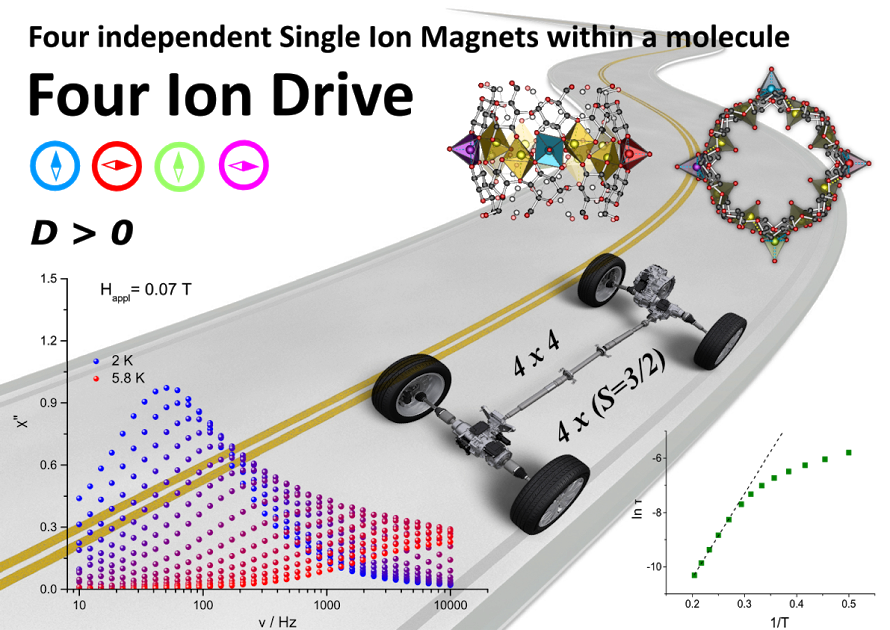Supramolecular Control over Molecular Magnetic Materials: γ-Cyclodextrin-Templated Grid of Cobalt(II) Single-Ion Magnets
Natalia Nedelko,+a Arkadiusz Kornowicz,+b Iwona Justyniak,c Pavlo Aleshkevich,a Daniel Prochowicz,b Piotr Krupiński,c Orest Dorosh,d Anna Ślawska-Waniewska,*a Janusz Lewiński*bc
a These authors contributed equally to this work.
a Institute of Physics, Polish Academy of Sciences, al. Lotników 32/46, 02-668 Warsaw, Poland
b Department of Chemistry, Warsaw University of Technology, Noakowskiego 3, 00−664 Warsaw, Poland
c Institute of Physical Chemistry, Polish Academy of Sciences, Kasprzaka 44/52, 01-224 Warsaw, Poland
d National Center for Nuclear Research, ul. Sołtana 7, 05-400 Otwock, Poland
DOI: 0.1021/ic501870h
First published online: 19 Nov 2014
Single-ion magnets (SIMs) are potential building blocks of novel quantum computing devices. Unique magnetic properties of SIMs require e ff ective separation of magnetic ions and can be tuned by even slight changes in their coordination sphere geometry. We show that an additional level of tailorability in the design of SIMs can be achieved by organizing magnetic ions into supramolecular architectures, resulting in gaining control over magnetic ion packing. Here, γ-cyclodextrin was used to template magnetic Co(II) and nonmagnetic auxiliary Li+ ions to form a heterometallic {Co, Li, Li}4 ring. In the sandwich-type complex [(γ-CD)2Co4Li8(H2O)12] spatially-separated Co(II) ions are prevented from superexchange magnetic coupling. Ac/dc magnetic and EPR studies demonstrated that individual Co(II) ions with positive zero-field splitting exhibit field-induced slow magnetic relaxation consistent with the SIM behavior, which is exceptional in complexes with easy-plane magnetic anisotropy.
Paper on the Publisher's website
Full-text PDF
